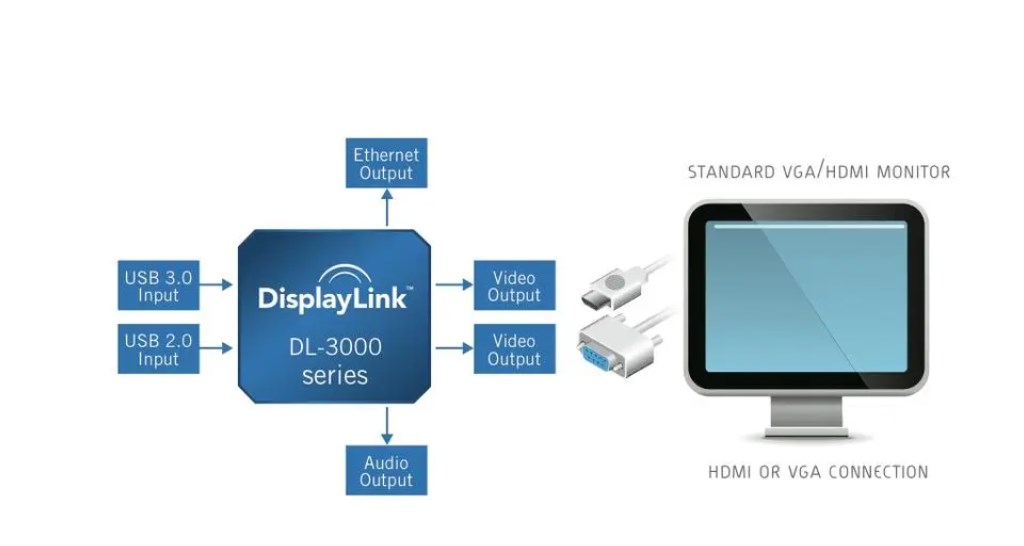DisplayLink is a connection technology that connects a monitor to a computer through a USB interface. It can connect a computer and multiple display devices very simply and conveniently. This technology can extend the virtual computer desktop through the USB interface. DisplayLink technology can support up to 6 monitors to display 32-bit color images at any resolution at the same time.
DisplayLink network graphics technology consists of virtual graphics card (VGC) software installed on the PC and a hardware rendering engine (HRE) embedded in or connected to the display device. DisplayLink VGC software is based on proprietary adaptive graphics technology. VGC software runs on a Windows, macOS, or Linux host PC and obtains information from the graphics adapter and compresses and transmits changes to the display since the last update over any standard network (including USB, Wireless USB, Ethernet, and Wi-Fi) send. Fi. After receiving the data, the HRE converts it back into pixels for display on the monitor. While basic network graphics technology can be used on a variety of network interfaces (Ethernet and Wi-Fi), DisplayLink has so far only designed products around USB 2.0, USB 3.0 and wireless USB connections.

DisplayLink technology does not install any hardware on the USB host device, so drivers must be installed. DisplayLink drivers are available for a variety of operating systems.
Windows system support
The current DisplayLink driver (June 2017) supports Windows 7, Windows 8, Windows 8.1, and Windows 10. Legacy DisplayLink drivers support Windows XP (32-bit only) and Windows Vista.
Windows RT version is not supported.
macOS
DisplayLink drivers are available for OS X 10.8 and later, but newer DisplayLink chipsets require newer versions of the drivers, which in turn require newer macOS versions. DisplayLink confirms that macOS versions 10.13.4 through 10.13.6 break compatibility with its driver. macOS 10.14 supports DisplayLink. macOS 10.13.4 introduces support for external graphics processors, also known as eGPUs.
Android
In May 2015, an Android app called DisplayLink Desktop was launched on the Google Play Store, but it was only available for Android 5.0 Lollipop and higher.
Linux
The current generation of USB3 chips is supported by binary-only drivers on Ubuntu. Linux kernel 3.4 also includes a basic DisplayLink driver.
DisplayLink driver installers for Debian and Ubuntu-based Linux distributions (Elementary OS, Mint, Kali, Deepin, etc.) are provided as part of the displaylink-debian project.
There is a DisplayLink-powered open source project called libdlo that aims to provide support for Linux and other platforms. There are also unofficial reverse engineering specifications available for older versions of DisplayLink technology.
Chrome OS
Starting with R51, devices that support DisplayLink can be used on Chrome OS.
